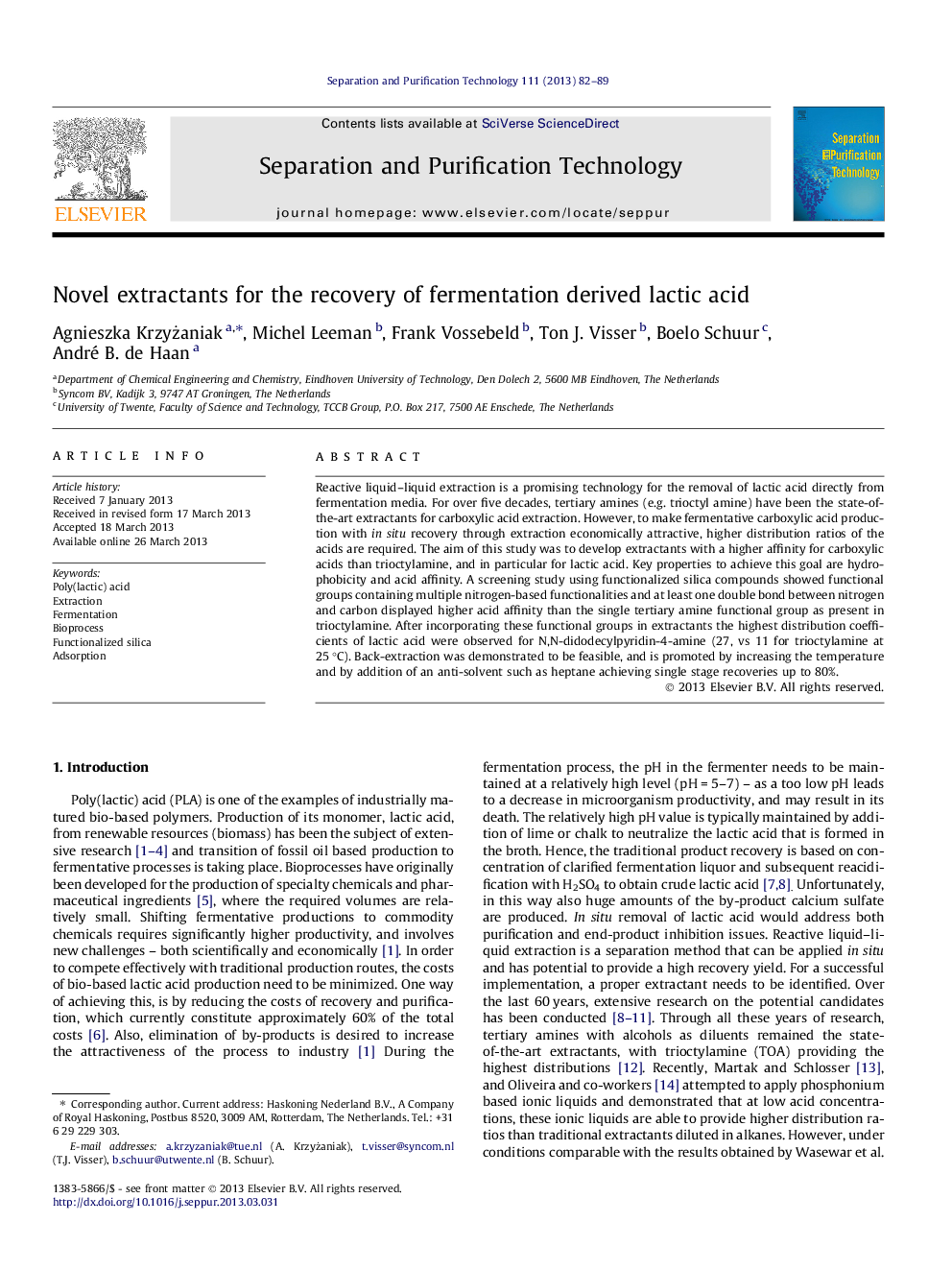| Article ID | Journal | Published Year | Pages | File Type |
|---|---|---|---|---|
| 641607 | Separation and Purification Technology | 2013 | 8 Pages |
•Lactic acid is recovered from aqueous solution by liquid-liquid reactive extraction.•Extractants containing multiple nitrogen groups have been tested.•N,N-didodecylpyridin-4-amine outperforms the state-of-the-art trioctylamine (TOA).•Back extraction is promoted by increase in temperature and addition of anti-solvent.•Single stage recoveries up to 80% were achieved.
Reactive liquid–liquid extraction is a promising technology for the removal of lactic acid directly from fermentation media. For over five decades, tertiary amines (e.g. trioctyl amine) have been the state-of-the-art extractants for carboxylic acid extraction. However, to make fermentative carboxylic acid production with in situ recovery through extraction economically attractive, higher distribution ratios of the acids are required. The aim of this study was to develop extractants with a higher affinity for carboxylic acids than trioctylamine, and in particular for lactic acid. Key properties to achieve this goal are hydrophobicity and acid affinity. A screening study using functionalized silica compounds showed functional groups containing multiple nitrogen-based functionalities and at least one double bond between nitrogen and carbon displayed higher acid affinity than the single tertiary amine functional group as present in trioctylamine. After incorporating these functional groups in extractants the highest distribution coefficients of lactic acid were observed for N,N-didodecylpyridin-4-amine (27, vs 11 for trioctylamine at 25 °C). Back-extraction was demonstrated to be feasible, and is promoted by increasing the temperature and by addition of an anti-solvent such as heptane achieving single stage recoveries up to 80%.
